Dive deep into a supernatural world of vampires, shapeshifters, and faeries with the Sookie Stackhouse series, penned by the phenomenal Charlaine Harris. This series is the perfect concoction of fantasy, mystery, romance, and Southern charm, wrapped up in a unique narrative style.
The series is also popularly known as “The Southern Vampire Mysteries” and “True Blood” the latter being the name of the hit HBO series based on the books. In this blog post, we’ll discuss the author behind the series, the charismatic lead character, and the correct order in which to read these books.

Who is Charlaine Harris?
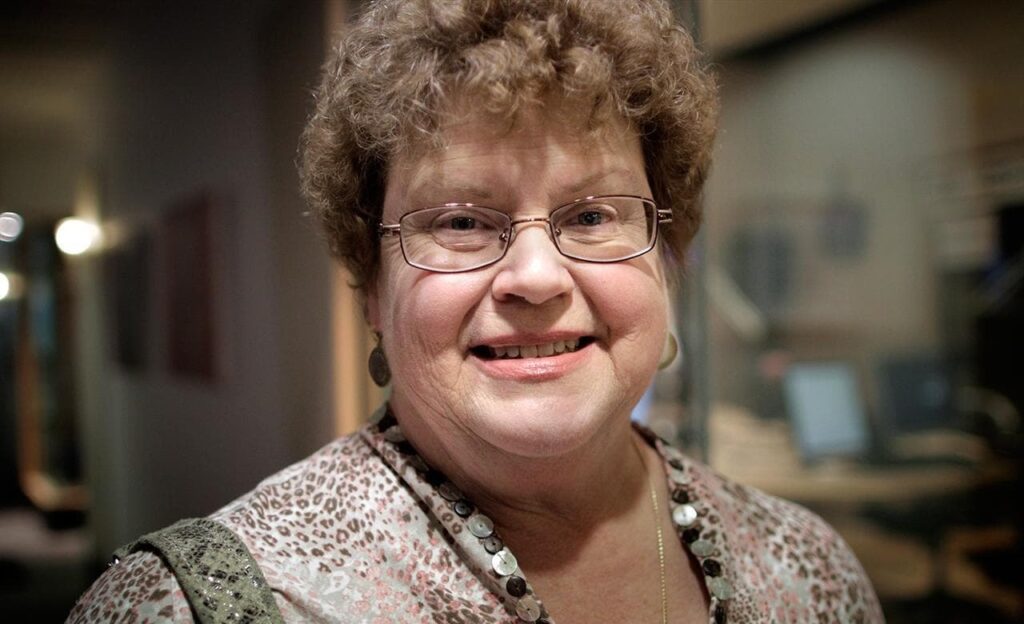
Charlaine Harris is an acclaimed and bestselling American author known primarily for her paranormal mysteries, a genre combining elements of mystery and fantasy. She was born on November 25, 1951, in Mississippi. Harris has been an active writer since the early 1980s.
Although she initially wrote conventional mystery novels, her biggest claim to fame is the “Southern Vampire Mysteries” series, featuring the character Sookie Stackhouse.
Quick Fact: Harris’s work has been recognized with several awards and her books have been translated into multiple languages, allowing her to reach a global audience.
Who is Sookie Stackhouse?
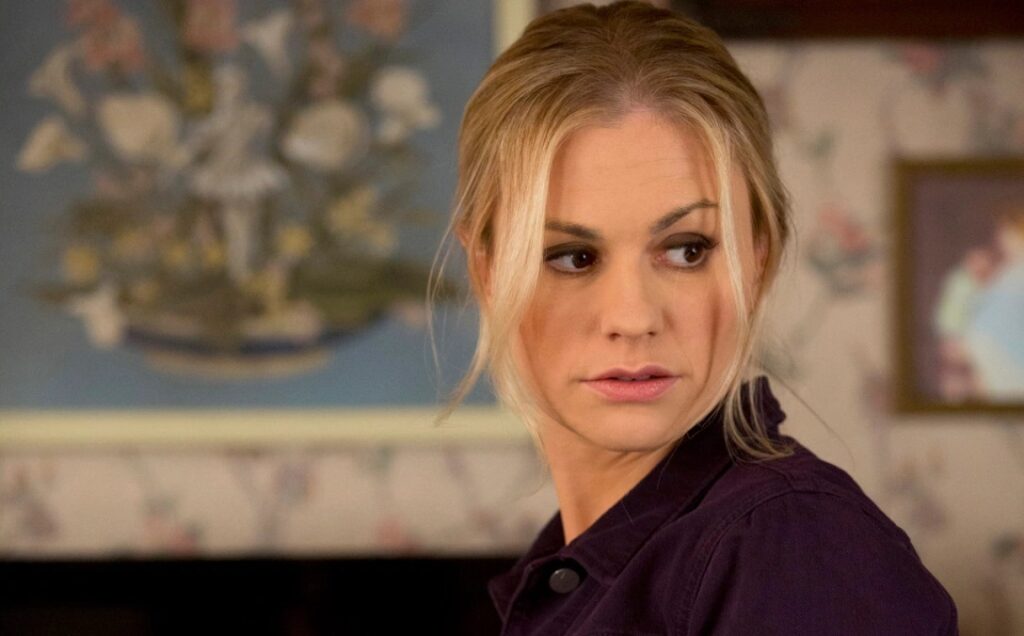
Sookie Stackhouse is the protagonist of Charlaine Harris’s “Southern Vampire Mysteries” series. She is a waitress residing in the fictional town of Bon Temps, Louisiana. Sookie isn’t just any ordinary woman; she’s a telepath who can hear people’s thoughts. This ability makes her life complicated until she meets Bill Compton, a 173-year-old vampire.
With Bill, her telepathy doesn’t work, providing her with a sense of peace she had never experienced before. Over the series, Sookie navigates a world filled with supernatural entities, solves various mysteries, and deals with several romantic entanglements.
Sookie Stackhouse Books in Order of Publication

- Dead Until Dark (2001)
- Living Dead in Dallas (2002)
- Club Dead (2003)
- Dead to the World (2004)
- Dead as a Doornail (2005)
- Definitely Dead (2006)
- All Together Dead (2007)
- From Dead to Worse (2008)
- Dead and Gone (2009)
- Dead in the Family (2010)
- Dead Reckoning (2011)
- Deadlocked (2012)
- Dead Ever After (2013)
Sookie Stackhouse Books in Chronological Order
The chronological order of the Sookie Stackhouse books is the same as the publication order listed above, as each novel follows the next in terms of the story’s timeline. The series starts with “Dead Until Dark” and concludes with “Dead Ever After.”
True Blood Adaptation
The Sookie Stackhouse series gained more popularity after it was adapted into the HBO television series “True Blood” in 2008. The show, created by Alan Ball, brings to life the complex world of Sookie Stackhouse and the supernatural beings she encounters.
While the series begins faithfully to the original material, as the seasons progress, it veers into new storylines and introduces characters that aren’t present in the books. Despite these differences, “True Blood” has been highly appreciated for its engaging storytelling and complex characters, keeping viewers hooked for seven seasons until its conclusion in 2014.
1. Dead Until Dark (2001)
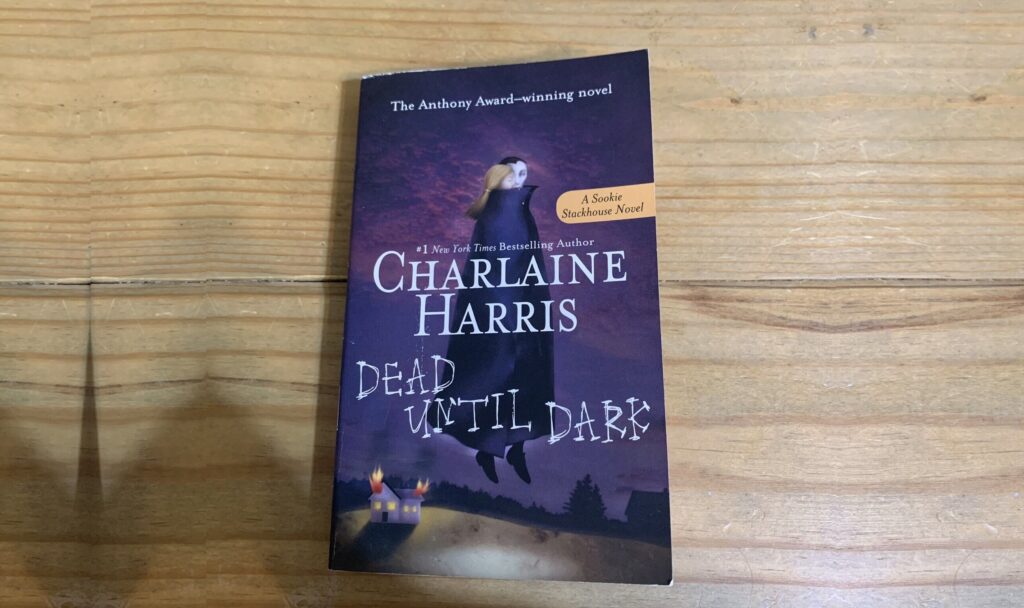
The first book in the Sookie Stackhouse series introduces us to Sookie, a waitress in Bon Temps, Louisiana, with the unusual ability to read minds. When she meets Bill Compton, a 173-year-old vampire, she’s relieved to discover that she can’t hear his thoughts, which makes him a comfortable presence in her life.
In a world where vampires have ‘come out of the coffin’ following the invention of synthetic blood, Sookie’s relationship with Bill opens her up to a whole new world of supernatural beings. However, her life takes a dark turn when women who have been involved with vampires start getting murdered.
With her powers and courage, Sookie sets out to find the killer.
2. Living Dead in Dallas (2002)
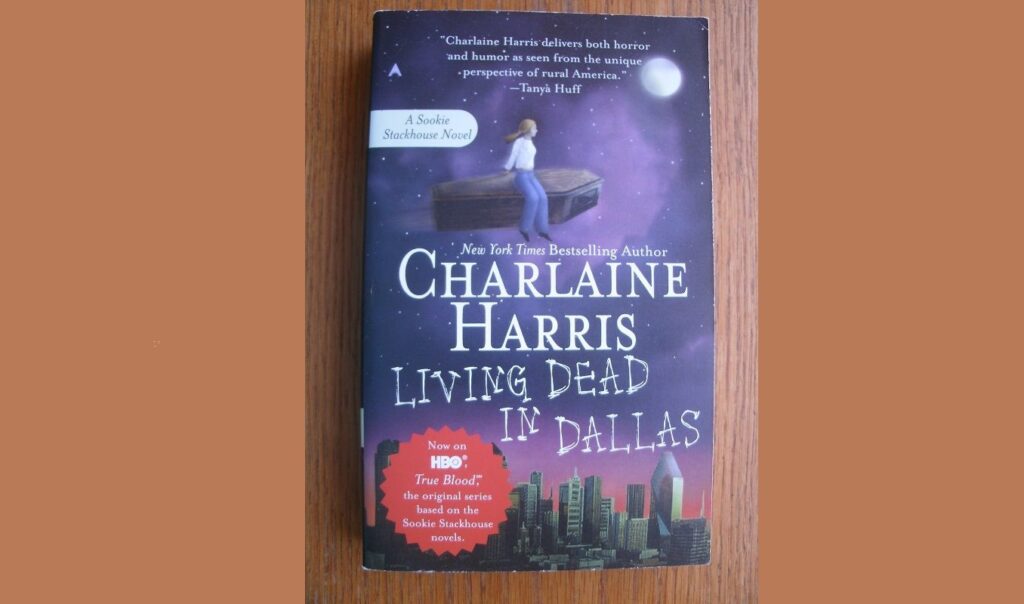
In the second book, Sookie’s relationship with Bill deepens, and he even ‘turns’ a vampire named Jessica to save her life. Meanwhile, Sookie is asked by Eric Northman, the local vampire sheriff, to use her telepathic abilities to solve a murder mystery in Dallas. Amid the investigation, she uncovers a dangerous sect of humans against vampires.
Meanwhile, back in Bon Temps, her friend Lafayette is murdered. The book is a balancing act between Sookie’s love life, her increased involvement with the vampire community, and her attempts to lead a somewhat normal life despite her unusual abilities.
3. Club Dead (2003)
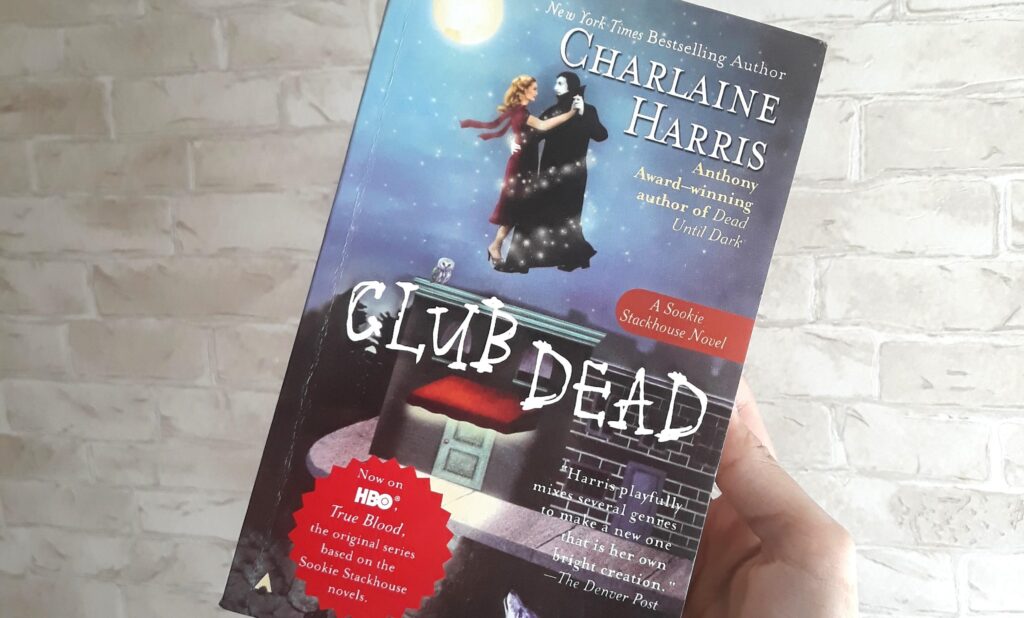
In this third installment, Sookie’s relationship with Bill hits a rough patch when he becomes distant, working on a secret project. When he goes missing, Eric and Pam reveal that Bill might have been kidnapped by his former lover, a powerful vampire named Lorena, as he was reportedly working on a project that involved a database of all the vampires in North America.
Sookie heads to Jackson, Mississippi, to rescue Bill with the help of a werewolf, Alcide Herveaux. The rescue mission throws her deeper into the supernatural world, introducing werewolves and shapeshifters.
4. Dead to the World (2004)
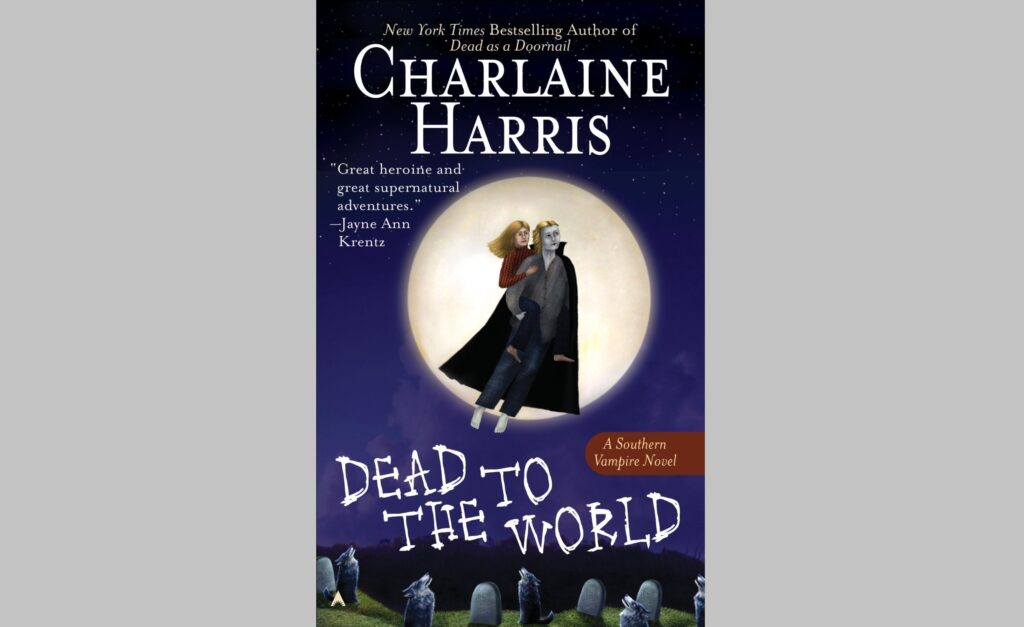
“Dead to the World” begins with Sookie finding an amnesiac Eric running down the road. His memory has been wiped out by witches who want to take over Shreveport’s supernatural community. With Bill still gone, Sookie and Eric grow closer.
Meanwhile, Sookie’s brother Jason goes missing, and while looking for him, she discovers a community of panther shifters. Sookie and a team of vampires, shapeshifters, and even a fairy cousin must band together to fight off the witch coven.
This installment further fleshes out the supernatural world and Sookie’s role within it, all while navigating a romantic entanglement with Eric.
5. Dead as a Doornail (2005)

Sookie Stackhouse finds herself once again amidst supernatural chaos. Her brother Jason, now a werepanther, is caught in a dangerous conflict as the pack’s new leader is about to be chosen. Meanwhile, a sniper is on the loose, targeting the local changeling population. Sookie, with her telepathic powers, is pulled into the investigation.
The book adds another layer of complexity to the supernatural world with the focus shifting from vampires to other shape-shifting creatures, including werewolves and werepanthers.
6. Definitely Dead (2006)
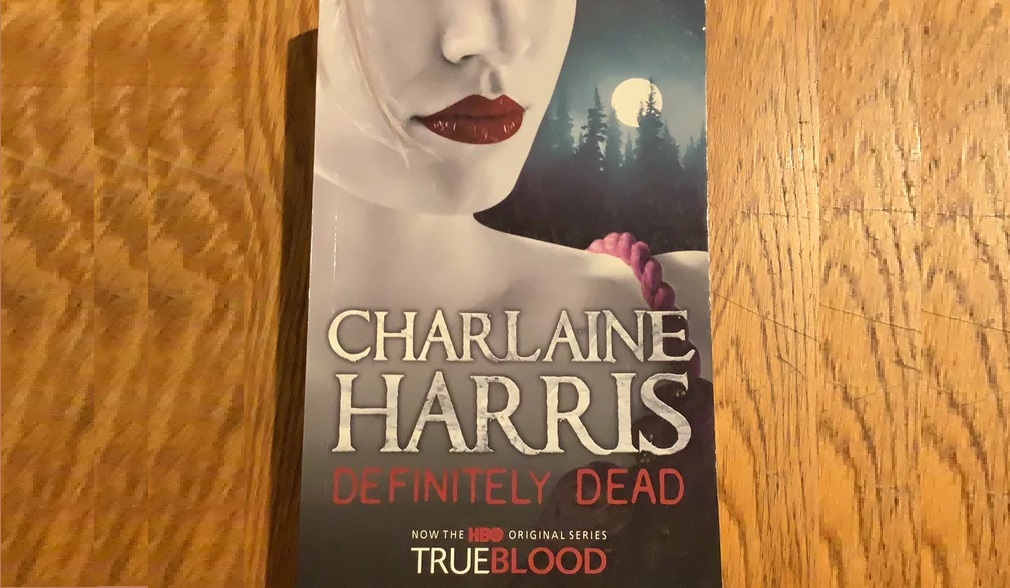
In the sixth installment of the series, Sookie heads to New Orleans to settle the affairs of her cousin Hadley, who was turned into a vampire and was involved with the Queen of Louisiana. Unfortunately, Hadley was murdered, and Sookie is tasked with finding out who killed her. In the meantime, she is now dating Quinn, a weretiger she met in “Dead as a Doornail.”
However, her love life is further complicated when she learns Bill’s true intentions for initially courting her, causing a rupture in her relationships with the vampires in her life.
7. All Together Dead (2007)
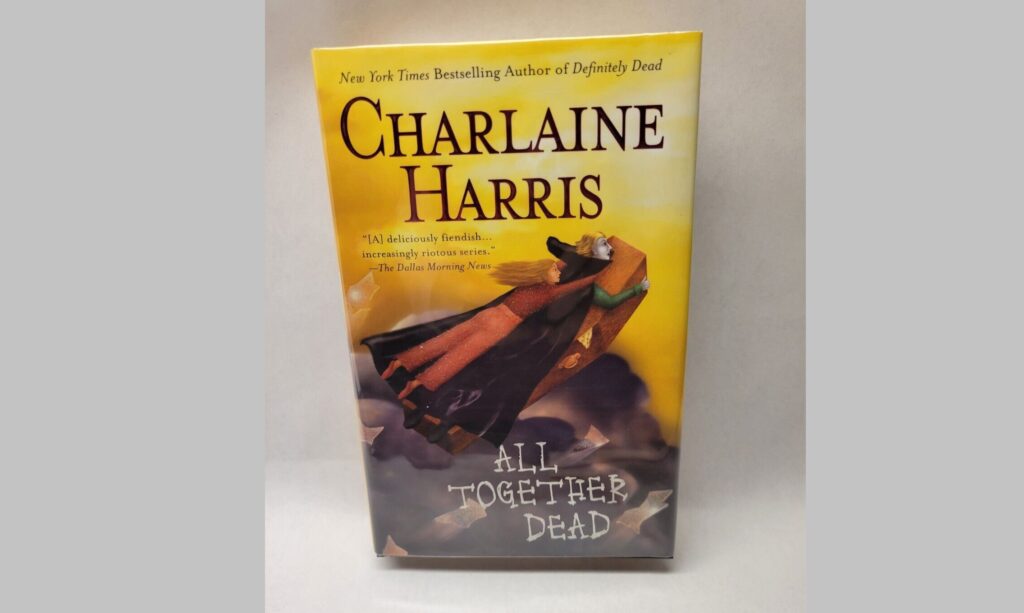
Sookie, along with her boyfriend Quinn, is hired by the Vampire Queen of Louisiana to attend a summit as her human telepath, where the Queen is on trial for killing her husband, the King of Arkansas. However, disaster strikes when the hotel hosting the summit is attacked. Amid the chaos, Sookie is tasked with protecting the Queen and figuring out who is behind the attack.
Sookie’s involvement with the vampire world deepens, and she finds herself in dangerous situations more often.
8. From Dead to Worse (2008)
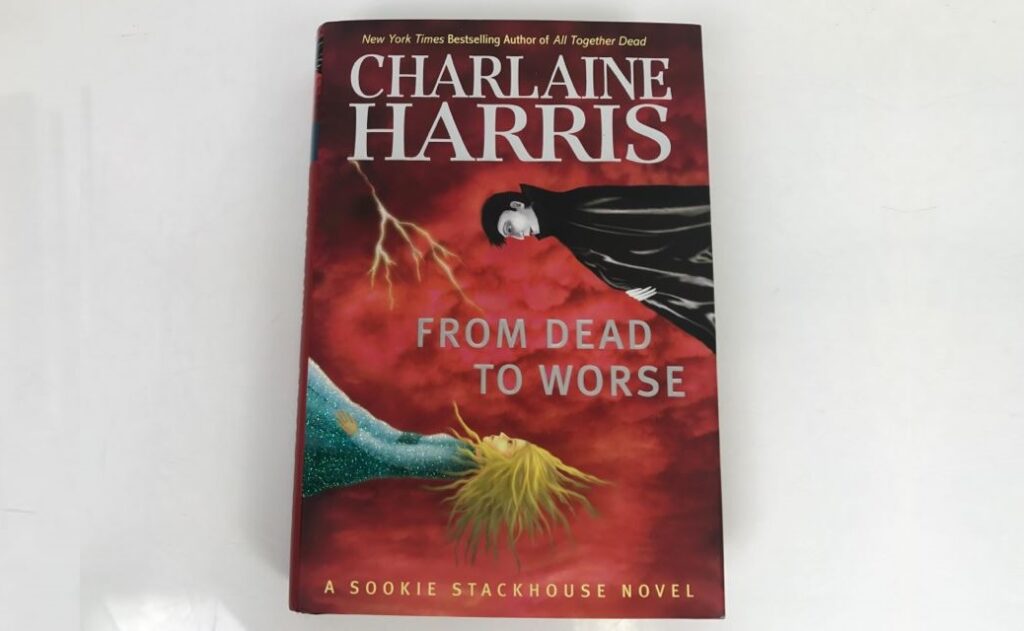
Post the disastrous summit, Sookie returns to Bon Temps only to find herself in the midst of several crises. A power struggle among the vampires leads to a hostile takeover attempt, there’s infighting in the were community, and her relationship with Quinn becomes strained.
As if that’s not enough, she discovers more about her heritage that she’s part fairy, which explains her telepathic abilities. By the end of the book, Sookie ends her relationship with Quinn and accepts a blood bond with Eric, leading to a closer relationship with him.
9. Dead and Gone (2009)

The ninth book in the series sees the werewolves and shifters revealing their existence to the world, following in the footsteps of the vampires. Sookie is pulled into a gruesome murder investigation when her sister-in-law, a werepanther, is found dead.
Meanwhile, the tension escalates when the faeries, who are at war, kidnap and torture Sookie due to her part-faery heritage. She is saved by the vampires and Weres, leading to a closure of sorts with the faeries.
10. Dead in the Family (2010)

After the harrowing events of the previous book, Sookie is recovering both physically and emotionally. Meanwhile, Eric’s maker, a Roman named Appius Livius Ocella, arrives with his vampire “son,” Alexei Romanov, who is mentally unstable due to his tragic past as the youngest son of Russia’s last tsar.
Sookie’s life becomes chaotic when they decide to stay at her home. The tensions culminated in a tragic incident involving several deaths, leading to Appius and Alexei’s end. Sookie also uncovers more about her fairy ancestry, with her fairy relatives coming to live nearby.
11. Dead Reckoning (2011)
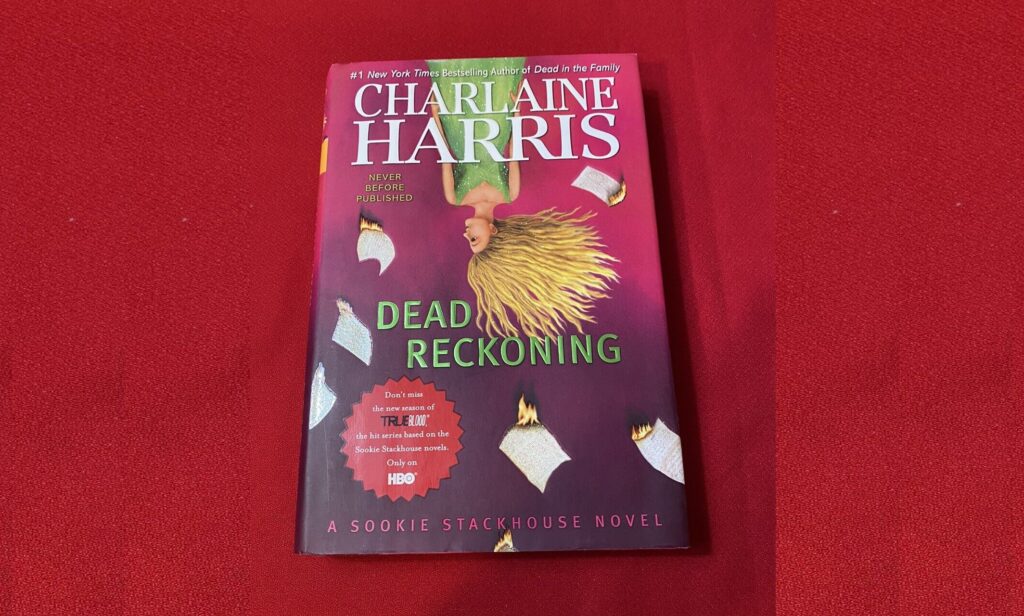
This book focuses on Sookie discovering more about her grandmother’s relationship with her half-fairy grandfather and their deal which involved Sookie without her knowledge. In the meantime, Sookie’s life is once again disrupted when the Shreveport vampire hierarchy is attacked by unknown forces.
As Sookie works to uncover the culprit, she must also navigate the complexities of her relationships with Eric and her other supernatural acquaintances.
12. Deadlocked (2012)
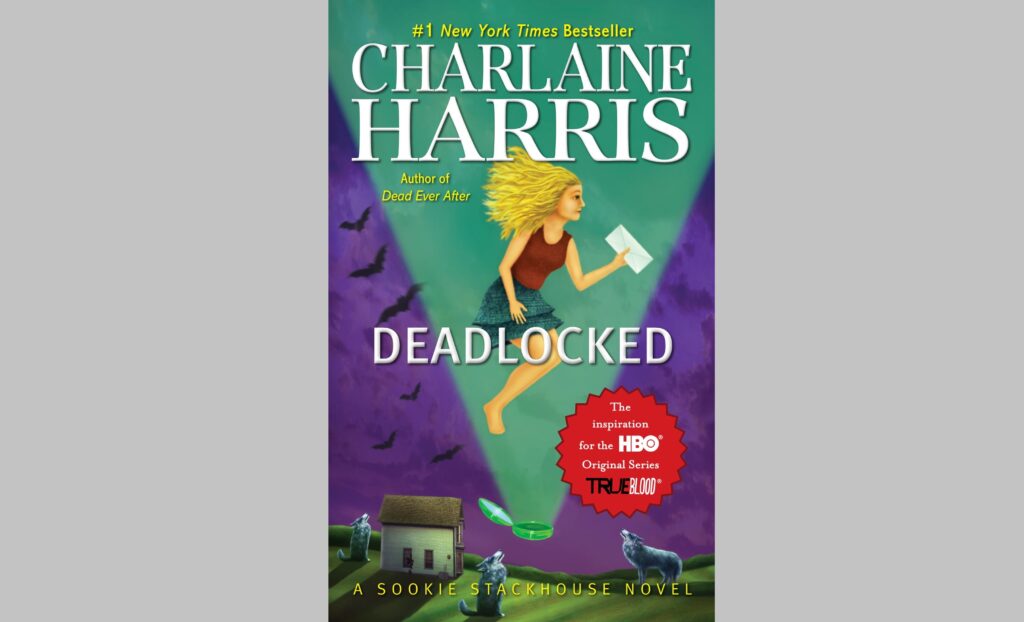
A controversial party at Eric’s house ends with the death of a girl, and Eric is the prime suspect. As Sookie works to clear his name, she uncovers a conspiracy that runs deeper than she imagined, involving vampire politics and ancient vampire rituals.
She also learns more about the relationships between humans, faeries, and vampires, leading to difficult decisions about her future with Eric.
13. Dead Ever After (2013)
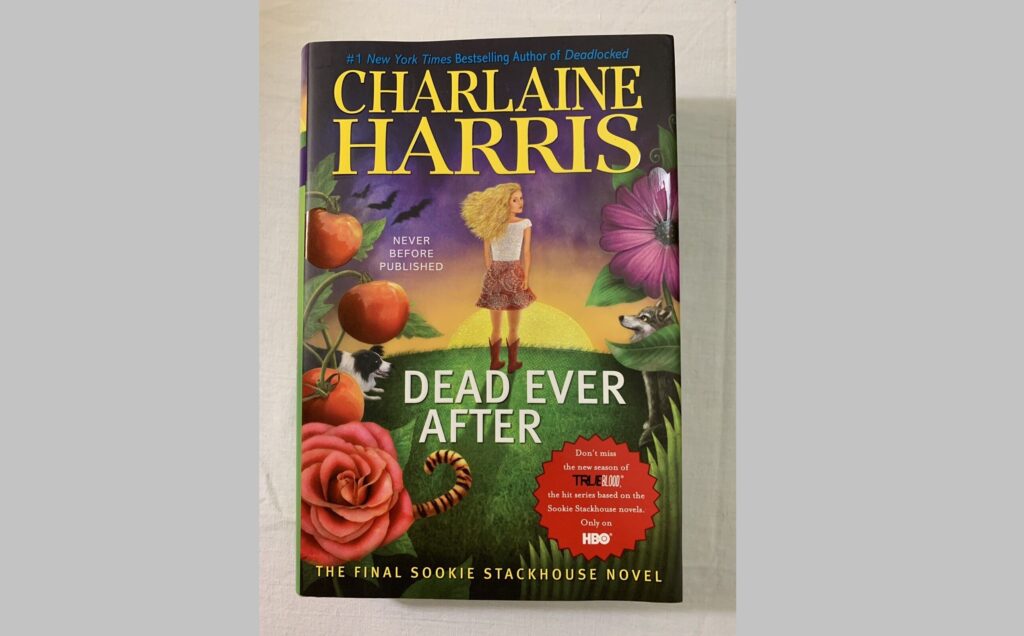
In the final book of the series, Sookie is put on trial for the murder of Arlene, a former coworker who had betrayed her. As her friends rally around her to help uncover the real killer, Sookie reevaluates her relationships with the various supernatural beings in her life.
She ends her romantic relationship with Eric, who is set to marry the vampire queen of Oklahoma, and she uses the Cluviel Dor, a magical fairy artifact, to resurrect her friend Sam. Ultimately, Sookie finds happiness in a simpler life, focusing on her relationship with Sam and distancing herself from the supernatural world.
The series concludes with a focus on personal choices, the desire for a ‘normal’ life despite the lure of the supernatural and the importance of true friendships over romantic entanglements.
In what order do you read the Sookie Stackhouse books?
The Sookie Stackhouse books, also known as The Southern Vampire Mysteries, should be read in the order they were published. This way, the character development and plot progression make the most sense. The order is as follows:
- Dead Until Dark (2001)
- Living Dead in Dallas (2002)
- Club Dead (2003)
- Dead to the World (2004)
- Dead as a Doornail (2005)
- Definitely Dead (2006)
- All Together Dead (2007)
- From Dead to Worse (2008)
- Dead and Gone (2009)
- Dead in the Family (2010)
- Dead Reckoning (2011)
- Deadlocked (2012)
- Dead Ever After (2013)
How many Sookie Stackhouse books are there?
There are a total of 13 full-length novels in the Sookie Stackhouse series. Additionally, there are several short stories and novellas that Harris has written that take place within the same universe and offer additional insight into the characters and world. These shorter works are often collected in anthologies.
What Sookie Stackhouse book comes after Definitely Dead?
The book that comes after “Definitely Dead” is “All Together Dead,” which is the seventh book in the series. In this installment, Sookie is hired by the Vampire Queen of Louisiana to attend a summit, where she is once again embroiled in vampire politics and danger.
Is the Sookie Stackhouse series complete?
Yes, the Sookie Stackhouse series is complete. The final book, “Dead Ever After,” was published in 2013. However, Charlaine Harris has continued to write short stories and companion books in the same universe, adding more details to the world of Sookie Stackhouse.
Who got Sookie pregnant?
In the book, Sookie Stackhouse does not get pregnant. Her romantic and personal life takes many turns throughout the series, involving different partners, but pregnancy is not part of her storyline in the book series.
Who does Sookie marry in True Blood books?
In the book, Sookie ends up with Sam Merlotte. Although she has a series of romantic entanglements with several characters throughout the series, including Bill Compton and Eric Northman, the final book sees her choosing a simpler life. She ends her relationship with Eric and uses a magical fairy artifact to save Sam’s life.
This marks the beginning of their romantic relationship, and the series concludes with them together, although it is not explicitly mentioned that they marry.
What makes the Sookie Stackhouse series different from other vampire literature?
The Sookie Stackhouse series stands out in the realm of vampire literature due to its unique blend of genres, incorporating elements of mystery, romance, and Southern Gothic alongside its fantasy aspects.
Also, the protagonist, Sookie, is a telepathic waitress rather than a vampire herself, and the stories revolve around her experiences and interactions with supernatural beings in her world. This human and relatable perspective adds a distinct flavor to the series.
What is the significance of Sookie’s telepathic abilities in the series?
Sookie’s telepathy is a central aspect of the series, influencing her relationships, her involvement in various mysteries, and her appeal to supernatural beings.
While it initially isolates her from others, it becomes an asset in the supernatural world, allowing her to aid in solving crimes and navigating vampire politics. It also contributes to her relationship with Bill, as she can’t hear his thoughts, providing her with much-desired peace.
How does Sookie’s character evolve throughout the series?
Sookie starts as a relatively naive waitress longing for a more exciting life. As she gets involved with the supernatural world, she develops into a strong, resilient woman who navigates danger and complex relationships.
She learns to use her telepathic ability to her advantage and makes decisions that show her growth, culminating in her choice for a simpler life with Sam Merlotte in the final book.
How does the setting of the series contribute to its narrative?
The series is set in the fictional small town of Bon Temps, Louisiana, and the Southern setting significantly contributes to the series’ atmosphere and narrative. The strong sense of community, slower pace of life, and cultural idiosyncrasies of the South are often juxtaposed with the dangerous and fast-paced world of the supernatural, creating an interesting contrast.
This also allows for the exploration of societal themes through the lens of the supernatural.
How does the HBO series “True Blood” compare to the books?
“True Blood” starts off closely following the plot of the books, but as the series progresses, it deviates more and more, introducing new storylines and characters. The show tends to be darker and more explicit than the books, and some character arcs differ significantly. For example, in the show, Sookie ends up with no one, while in the books, she ends up with Sam.
How does the supernatural world expand throughout the series?
The series begins with a focus on vampires but gradually introduces other supernatural beings such as werewolves, shapeshifters, faeries, and witches. Each book delves deeper into the mythology, politics, and social structures of these supernatural entities, creating a rich and complex world that parallels the human one.
How does Charlaine Harris handle the theme of identity in the series?
Throughout the series, Harris explores the theme of identity through Sookie’s self-discovery journey and the larger societal response to supernatural beings. Sookie grapples with her telepathic ability, her relationships with various supernatural beings, and her part-fairy heritage, ultimately embracing her unique identity.
In a broader sense, the series portrays vampires’ struggle for acceptance and rights in society, paralleling real-world issues of minority rights and acceptance.
Why is Charlaine Harris an influential figure in the urban fantasy genre?
Charlaine Harris is considered an influential figure in the urban fantasy genre due to her successful Sookie Stackhouse series, which blends elements of mystery, romance, and supernatural fantasy. Her vivid world-building and distinctive characters have resonated with a broad audience, inspiring numerous other authors.
Additionally, the series’ adaptation into the popular HBO TV show “True Blood” has further solidified her impact on the genre.
How does the theme of coexistence between humans and supernatural beings develop throughout the Sookie Stackhouse series?
The theme of coexistence is a significant aspect of the series, and it develops along with the expansion of the supernatural world. Initially, the focus is on vampires and their “Great Revelation”, their efforts to integrate into human society, and the resulting tensions.
As more supernatural beings (werewolves, shapeshifters, faeries, etc.) are introduced, the theme broadens, highlighting the complexities and struggles of peaceful coexistence, mutual acceptance, and societal integration.
How do Sookie’s relationships with supernatural beings evolve throughout the series?
Sookie’s relationships with supernatural beings evolve significantly throughout the series. Initially intrigued and attracted to the supernatural world, her relationships are characterized by curiosity, passion, and some naivety. As she becomes more deeply involved, the relationships grow more complex and sometimes dangerous, often leaving Sookie conflicted.
By the end of the series, Sookie chooses a simpler life with Sam, indicating a desire to distance herself from the supernatural world’s complexities and dangers.
What role does Sookie’s telepathy play in her interaction with supernatural beings?
Sookie’s telepathy is a pivotal aspect of her interactions with supernatural beings. It initially attracts Bill, as Sookie can’t hear his thoughts, providing a sense of normalcy. However, it also exposes her to danger and makes her valuable to the supernatural community, leading her to numerous adventures and predicaments.
It also provides a unique perspective into the minds of others, shaping her understanding and relationships.
How does Charlaine Harris explore societal issues through the supernatural elements in her series?
Harris skillfully uses supernatural elements as metaphors to explore societal issues like prejudice, acceptance, and rights. For instance, the vampires’ struggle for societal acceptance and legal rights mirrors the real-world issues faced by minority groups.
Similarly, the complexities of inter-species relationships reflect issues of interracial and intercultural relationships in society.
What are the major differences between the Sookie Stackhouse books and their TV adaptation, “True Blood”?
While the initial seasons of “True Blood” closely follow the plot of the books, the TV series introduces new storylines and characters as it progresses. It is generally darker and more explicit than the books, and character arcs often differ significantly.
Notably, the series ends with Sookie choosing to live alone, while in the books, she ends up in a relationship with Sam Merlotte.
How does the Sookie Stackhouse series reflect the evolution of the vampire genre?
The Sookie Stackhouse series reflects the evolution of the vampire genre from horror-centric stories to narratives focusing more on character development, romance, and societal themes. The series portrays vampires as complex beings with their culture and struggles, moving away from the traditional portrayal of vampires as mere monsters.
It integrates modern society with the supernatural, indicative of the genre’s shift towards urban fantasy.
How does the character of Sookie Stackhouse challenge traditional female stereotypes in fantasy literature?
Sookie Stackhouse challenges traditional female stereotypes by being a strong, independent, and complex lead character. She’s not a damsel in distress but a woman who can take care of herself. Her telepathic abilities, while making her different, become an asset that she uses to her advantage.
She navigates a world filled with powerful supernatural beings with resilience, intelligence, and wit, and her relationships evolve on her own terms.
What role does the setting of Louisiana play in the Sookie Stackhouse series?
The Southern setting in Louisiana is integral to the Sookie Stackhouse series. It’s not just a backdrop, but a character in itself that influences the lives of the characters and the unfolding events.
The small-town dynamics, Southern culture, and the stark contrast between the mundane and supernatural elements contribute significantly to the narrative’s overall texture and atmosphere.
How does Charlaine Harris weave humor into the otherwise dark and supernatural plotline?
Charlaine Harris incorporates humor through witty dialogues, Sookie’s internal monologues, and situational comedy. Even amid serious or dangerous situations, Sookie’s dry wit and the absurdity of certain scenarios bring a lightheartedness to the narrative. This humorous undertone makes the series more relatable and engaging.
How does the series address the theme of identity and acceptance?
Identity and acceptance are recurrent themes in the series. Sookie’s journey reflects her struggle to accept her telepathic abilities and her place amidst the supernatural. Similarly, supernatural beings like vampires and shifters grapple with their identities and seek societal acceptance.
This continuous thread of self-acceptance and societal recognition forms a crucial part of the series’ thematic structure.
How do the short stories and novellas complement the main Sookie Stackhouse series?
The short stories and novellas provide additional insights into the characters and expand the world of Sookie Stackhouse. They often delve deeper into events or characters’ backstories that were briefly mentioned or alluded to in the main series, enriching the reading experience.
How does Sookie’s relationship with Bill Compton evolve throughout the series?
Sookie’s relationship with Bill Compton starts as a romantic one, mainly because Sookie enjoys the peace she gets from not being able to hear his thoughts. Over time, as Sookie becomes more entrenched in the supernatural world, their relationship becomes strained due to betrayals and complex vampire politics.
Eventually, they remain friends, but their initial romantic relationship doesn’t rekindle.
How do the supernatural elements in the Sookie Stackhouse series serve as metaphors for real-world issues?
The supernatural elements often mirror real-world issues like discrimination, prejudice, and the struggle for rights and acceptance. For instance, the vampires’ fight for legal rights and societal acceptance parallels many real-world struggles of minority communities.
The complex dynamics between different supernatural species also reflect real-world issues such as racism and classism.
Conclusion
From exploring the Sookie Stackhouse books in order to their adaptation into the popular TV show “True Blood,” it’s clear that Charlaine Harris’s series has left an indelible mark on the urban fantasy genre.
With a strong, complex female lead, a richly detailed world that blends the supernatural with the mundane, and a narrative that skillfully weaves humor, mystery, and romance with thought-provoking themes, the series offers a compelling read.
Whether you’re already a fan or new to Sookie Stackhouse, this guide provides a comprehensive look into the series that has captivated readers worldwide. Happy reading!
